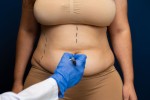Introduction
In recent years weight loss solutions have expanded beyond traditional surgery. One procedure gaining increased attention is endoscopic sleeve gastroplasty. Unlike gastric bypass or sleeve gastrectomy, this approach is non-surgical. It reshapes the stomach using an endoscope, which means avoiding incisions.
For patients seeking effective weight management without major surgery, this technique offers a middle ground. It offers significant results while maintaining a shorter recovery time. This article explores everything you need to know about endoscopic sleeve gastroplasty, from the procedure itself to recovery and lifestyle impact.
So, What Exactly Is Endoscopic Sleeve Gastroplasty?
Endoscopic sleeve gastroplasty, often shortened to ESG, is a minimally-invasive weight loss procedure. It involves reducing the stomach’s volume, but without removing any tissue. Instead, an endoscope equipped with suturing tools is inserted through the mouth.
By stitching the stomach from the inside, doctors amazingly create a smaller, tube-like shape. This ultimately limits food intake and promotes a feeling of fullness. No cuts are made, and no part of the stomach is permanently removed.
The reduced size slows digestion, helping patients adopt healthier eating habits and lose weight sustainably.
Endoscopic Sleeve Gastroplasty Step One: Preparation
Before undergoing endoscopic sleeve gastroplasty, patients go through careful preparation. Doctors carry out health checks, including imaging and blood tests. Specialists in nutrition, psychology and gastroenterology will often provide assessments.
These evaluations ensure the patient is ready and suitable for ESG. They also help prepare the lifestyle changes required for long-term success. Patients are advised to adjust diets, reduce alcohol and stop smoking well in advance.
This preparation stage ensures both safety and readiness for the journey ahead.
Endoscopic Sleeve Gastroplasty Step Two: The Procedure Itself
The ESG procedure itself usually takes 1-2 hours. Patients are placed under anaesthesia. An endoscope (a thin flexible tube with a camera) is inserted through the mouth into the stomach.
Using specialised suturing tools the surgeon creates folds within the stomach wall. These folds reduce the stomach’s capacity by up to 70%. The stomach itself is reshaped into a sleeve-like tube.
Because no incisions are made, the procedure is far less invasive than traditional bariatric surgery. Patients often return home the same day.

Endoscopic Sleeve Gastroplasty Step Three: Recovery and Aftercare
Recovery after ESG is faster than other surgical alternatives. Most patients resume daily activities within a few days. Mild soreness, bloating or nausea may occur but this usually resolves quickly.
A gradual diet plan is the next step. Patients will start off with liquids, progress to soft foods, and eventually return to solids. Nutritionists guide this process to make sure meals are balanced and portions manageable.
Follow-up appointments monitor progress, provide support and encourage lifestyle adjustments. This aftercare is vital for sustaining results.
Expected Results and Weight Loss
On average, patients will lose about 15-20% of their body weight within the first year. Results vary depending on diet, exercise and long-term commitment.
Because the stomach is smaller, patients feel full sooner and eat less. The procedure also encourages healthier food choices, since overeating leads to discomfort.
Sustained weight loss improves related health conditions - diabetes, hypertension, and sleep apnoea. Many patients report enhanced confidence and energy levels, making daily life more enjoyable.
Who Is the Ideal Candidate for ESG?
Endoscopic sleeve gastroplasty is recommended for patients with a body mass index (BMI) of 30-40. The procedure suits those who haven’t achieved weight loss through diet and exercise alone.
Candidates must be willing to embrace long-term lifestyle changes. It’s important to remember that ESG is not a quick fix. Instead, it supports healthier eating habits and gradual improvement.
Patients with more severe obesity may still require traditional bariatric surgery. However, ESG offers a valuable option for many seeking a less invasive solution.
Advantages of Endoscopic Sleeve Gastroplasty Compared with Surgery
There are several advantages of endoscopic sleeve gastroplasty when compared with surgical alternatives. First off, there are no external incisions, which reduces scarring and discomfort. Secondly, recovery is much faster - often measured in days instead of weeks.
Additionally, ESG carries fewer complications than major surgery. It also allows patients to resume work or family duties quickly. For many, the balance between effectiveness and minimal invasiveness makes it highly appealing.
Conclusion
Endoscopic sleeve gastroplasty (or ESG) is transforming weight loss treatment. It combines effectiveness with minimal invasiveness, which is key to its attractiveness for many patients. From preparation to recovery, the procedure offers a clear path to sustainable weight management. Success requires lifestyle changes, but the benefits extend far beyond appearance.
For more information on this and other weight loss procedures visit the ACIBADEM Beauty Center website.
Frequently Asked Questions
It is a non-surgical procedure that reduces stomach size using an endoscope and sutures.
Patients typically lose 15–20% of body weight within a year.
No, the stomach can stretch over time, though results last with lifestyle commitment.
Patients with a BMI between 30 and 40 are ideal candidates.
It is less invasive, has faster recovery, and fewer complications than bariatric surgery.














